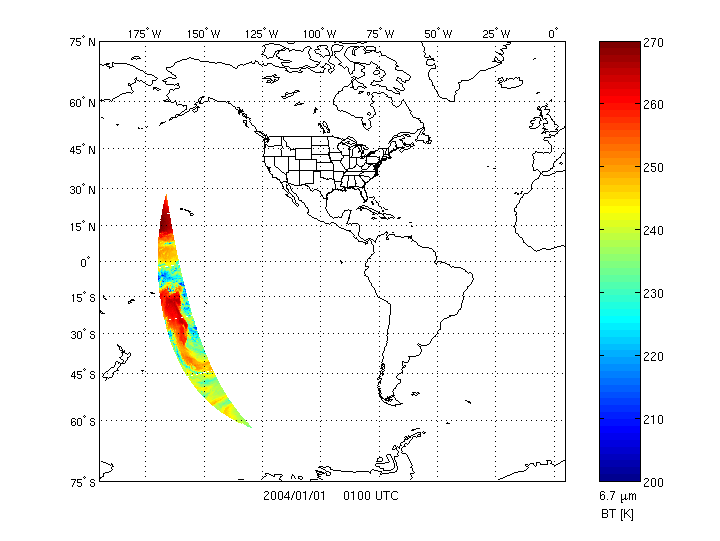
[ Archive ]

 |
CIMSS-NOAA Weekly Report
[ Archive ] |
 |
IN THE PRESS:
ITEMS FOR THE ADMINISTRATOR:
ITEMS FOR THE ASSISTANT ADMINISTRATOR:
GOES Sounder Cloud Product Approved for Operational Trial:
The Operations and Services Improvement (OSIP) committee of the
National Weather Service (NWS) accepted the Real Time Mesoscale
Analysis (RTMA) for operational trials. The RTMA is a 5 km
resolution system that generates gridded surface analyses of standard
meteorological parameters to aid forecasters in validating the National
Digital Forecast Database. The NESDIS operational Effective Cloud
Amount (ECA) retrieval from the GOES sounders was selected as a proxy
for the RTMA hourly sky cover. Transmission of the NESDIS ECA
product will begin in October. Personnel at the Forecast Products
Development Team (FPDT) and the Cooperative Institute for
Meteorological Satellites Studies (CIMSS) worked hard to deliver the
ECA product to the NWS in the proper format for the RTMA evaluation
phase. (R. Aune, E/RA2, 608-262-1071)
Significance:
The RTMA will assist NWS forecasters with improving forecasts created
for the National Digital Forecast database. The RTMA will also be
used to create a long-term Analysis of Record (AOR) in which the GOES
sounder ECA will provide a record of sky conditions.
NOAA Mission Goal:
Serve society's needs for weather and water information.
NOAA Cross-Cutting Priorities:
Integrated Global Environmental Observation and Data Management
ITEMS FOR THE OFFICE DIRECTOR, STAR:
CIMSS hosts CREST Students for McIDAS Training: Six graduate students from two of the participating institutions (City College of New York and Hampton University) in the NOAA Cooperative Remote Sensing Science and Technology Center (CREST) visited the Cooperative Institute for Meteorological Satellite Studies (CIMSS) August 22-25, 2006. The two-fold purpose of their trip was (1) to receive training on the University of Wisconsin-Madison Space Science and Engineering Center (SSEC) Man computer Interactive Data Access System (McIDAS) and (2) to be exposed to, and learn about, the various areas of satellite research at CIMSS. Nearly three days were devoted to McIDAS instruction and exercises (much by McIDAS Users Group (MUG) staff), while nearly another day was spent in discussion and presentation with over fifteen CIMSS and SSEC scientists and staff. (G. S. Wade, E/RA2, 608-263-4743, gary.s.wade@noaa.gov)
ITEMS FOR THE DIVISION CHIEF, CoRP
 (Click image to enlarge)
(Click image to enlarge)Proposal Review: J. Key reviewed a proposal on polar cloud properties during the International Polar year for the National Science Foundation. (J. Key, E/RA2, 608-263-2605, jeff.key@noaa.gov)
Other Meetings and Telecons:
(None)
VISITORS:
NEXT WEEK:
LOOKING AHEAD: